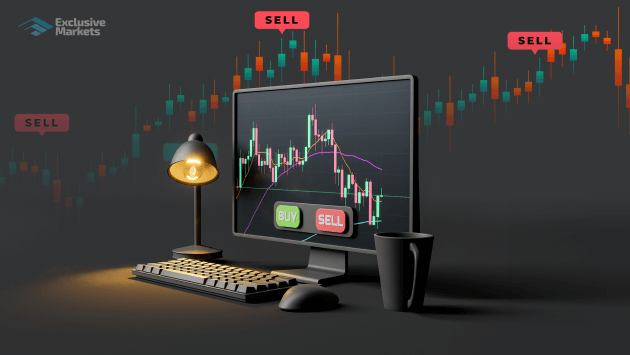
Forex trading online has become one of the most popular financial activities around the globe. With the advent of advanced online platforms, anyone with an internet connection can engage in currency trading with relative ease. This accessibility has led to a surge in interest among individual traders looking to leverage the volatility of the Forex market for profit. For those looking to enhance their trading strategies, forex trading online exbroker-turkiye.com offers valuable resources and tools to navigate the complexities of Forex trading.
What is Forex Trading?
Forex trading, also known as foreign exchange trading or FX trading, involves the buying and selling of currencies in the foreign exchange market. It is the largest and most liquid financial market in the world, with an estimated daily trading volume exceeding $6 trillion. Traders speculate on the price movements of currency pairs, seeking to profit from fluctuations in exchange rates.
Why Trade Forex Online?
There are several compelling reasons to consider trading Forex online:
- Accessibility: With the proliferation of online trading platforms, individuals can trade Forex from the comfort of their homes or on the go via mobile devices.
- Flexibility: The Forex market operates 24 hours a day, five days a week, allowing traders to participate at their convenience.
- Leverage: Forex brokers often offer leverage, enabling traders to control larger positions with a relatively small amount of capital.
- Diverse Strategies: From day trading to swing trading, there are various strategies traders can adopt based on their risk tolerance and trading style.
Getting Started with Forex Trading
Entering the Forex trading arena involves several key steps:
1. Choosing a Reliable Broker
Your choice of broker is crucial to your success in Forex trading. Look for a broker that is well-regulated, offers competitive spreads, and provides a user-friendly trading platform. Additionally, consider the range of currency pairs available for trading.
2. Opening a Trading Account
Once you have selected a broker, you will need to open a trading account. Most brokers offer demo accounts, allowing you to practice trading without financial risk. This is an excellent way to familiarize yourself with the platform and test your trading strategies.
3. Learning the Basics of Forex Trading
Before diving in, it’s essential to understand the fundamentals of Forex trading, including how to read currency pairs, the significance of pips, and the factors that influence currency movements.
Key Concepts in Forex Trading
To succeed in Forex trading, it’s imperative to grasp several key concepts:
Currency Pairs
In the Forex market, currencies are traded in pairs, such as EUR/USD or GBP/JPY. The first currency is the base currency, while the second currency is the quote currency. The exchange rate indicates how much of the quote currency is needed to purchase one unit of the base currency.
Pips and Lots
A pip, or percentage in point, is the smallest price move that a given exchange rate can make. In Forex trading, currencies are typically traded in lots, with standard lots being 100,000 units of the base currency. Traders often use smaller lot sizes, such as mini lots (10,000 units) or micro lots (1,000 units), to manage their risk exposure.

Leverage and Margin
Leverage allows traders to control a larger position than their initial capital would permit. For example, with 100:1 leverage, you can trade $100,000 with just $1,000 of your own capital. However, while leverage can amplify profits, it also increases the risk of losses.
Effective Forex Trading Strategies
Success in Forex trading often hinges on the strategies employed. Here are some popular trading strategies:
1. Day Trading
Day trading involves making multiple trades within a single day to capitalize on short-term market movements. Day traders typically close out their positions before the market closes to avoid overnight risks.
2. Swing Trading
Swing trading is a medium-term strategy where traders hold positions for several days or weeks to take advantage of price swings. This approach requires a solid understanding of technical and fundamental analysis.
3. Position Trading
Position trading is a long-term strategy focused on fundamental analysis. Traders holding positions for months aim to benefit from significant price shifts driven by economic events or trends.
Risk Management in Forex Trading
Risk management is paramount in Forex trading. The following techniques can help mitigate your risks:
1. Set Stop-Loss Orders
Implementing stop-loss orders automatically closes your trade when it reaches a predetermined price, limiting your losses in case the market moves against you.
2. Diversify Your Portfolio
Avoid putting all your capital into one trade or currency pair. Diversifying your portfolio can help reduce risk and increase the potential for profit.
3. Use Proper Position Sizing
Calculating the appropriate position size based on your account balance and risk tolerance is critical. Only risk a small percentage of your capital on any single trade.
Conclusion
Forex trading online offers exciting opportunities for individuals looking to capitalize on global currency fluctuations. By understanding the basics of Forex, choosing a reliable broker, and employing effective trading strategies and risk management techniques, traders can increase their chances of success. Remember, continuous learning and practice are essential as you navigate the dynamic world of Forex trading.
Whether you’re a novice or a seasoned trader, the world of Forex trading is vast and requires ongoing education and adaptability. Stay informed about market trends, economic indicators, and geopolitical events to make informed trading decisions.
Leave a Reply